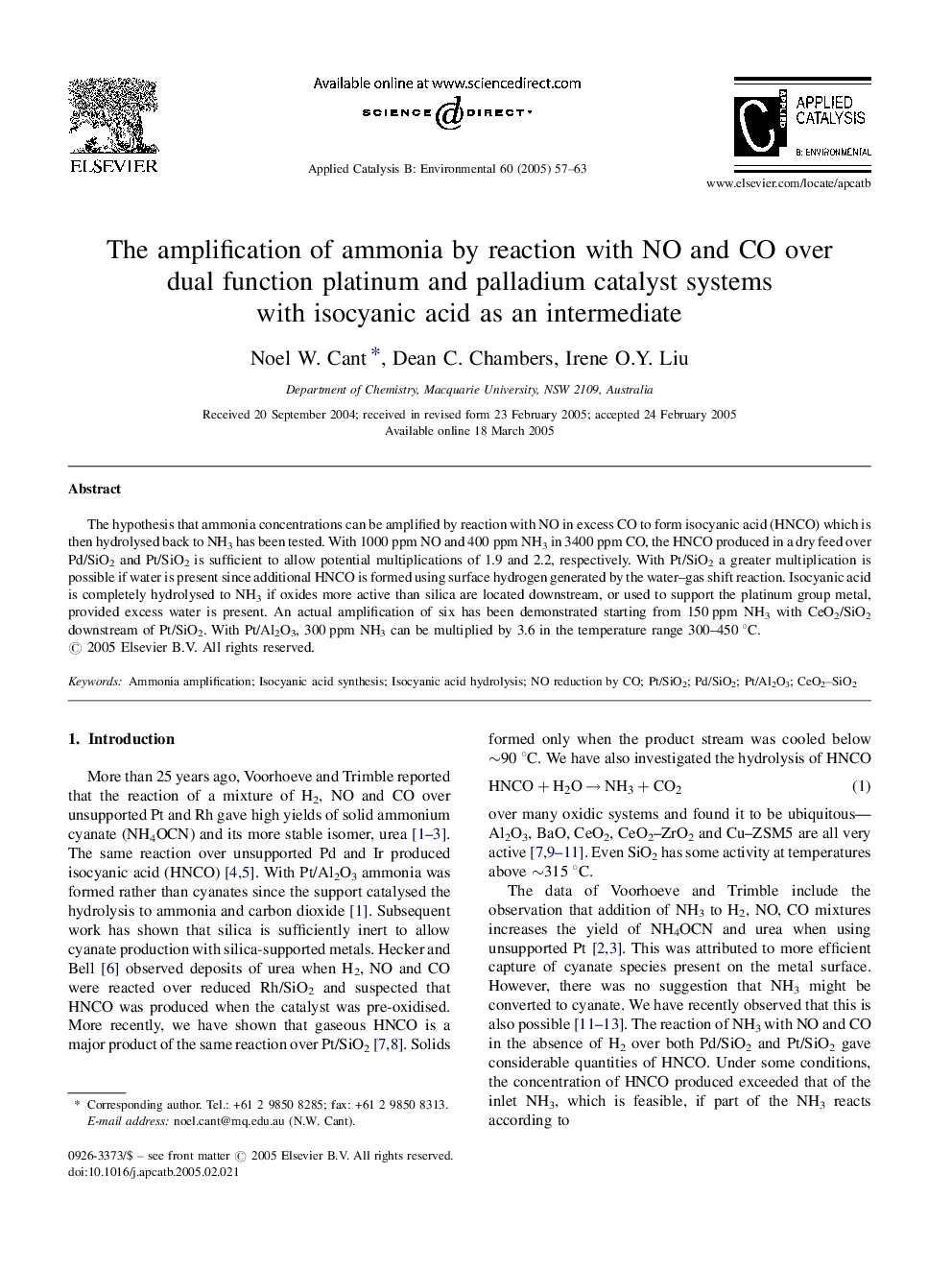| Article ID | Journal | Published Year | Pages | File Type |
|---|---|---|---|---|
| 9609825 | Applied Catalysis B: Environmental | 2005 | 7 Pages |
Abstract
The hypothesis that ammonia concentrations can be amplified by reaction with NO in excess CO to form isocyanic acid (HNCO) which is then hydrolysed back to NH3 has been tested. With 1000 ppm NO and 400 ppm NH3 in 3400 ppm CO, the HNCO produced in a dry feed over Pd/SiO2 and Pt/SiO2 is sufficient to allow potential multiplications of 1.9 and 2.2, respectively. With Pt/SiO2 a greater multiplication is possible if water is present since additional HNCO is formed using surface hydrogen generated by the water-gas shift reaction. Isocyanic acid is completely hydrolysed to NH3 if oxides more active than silica are located downstream, or used to support the platinum group metal, provided excess water is present. An actual amplification of six has been demonstrated starting from 150 ppm NH3 with CeO2/SiO2 downstream of Pt/SiO2. With Pt/Al2O3, 300 ppm NH3 can be multiplied by 3.6 in the temperature range 300-450 °C.
Related Topics
Physical Sciences and Engineering
Chemical Engineering
Catalysis
Authors
Noel W. Cant, Dean C. Chambers, Irene O.Y. Liu,
